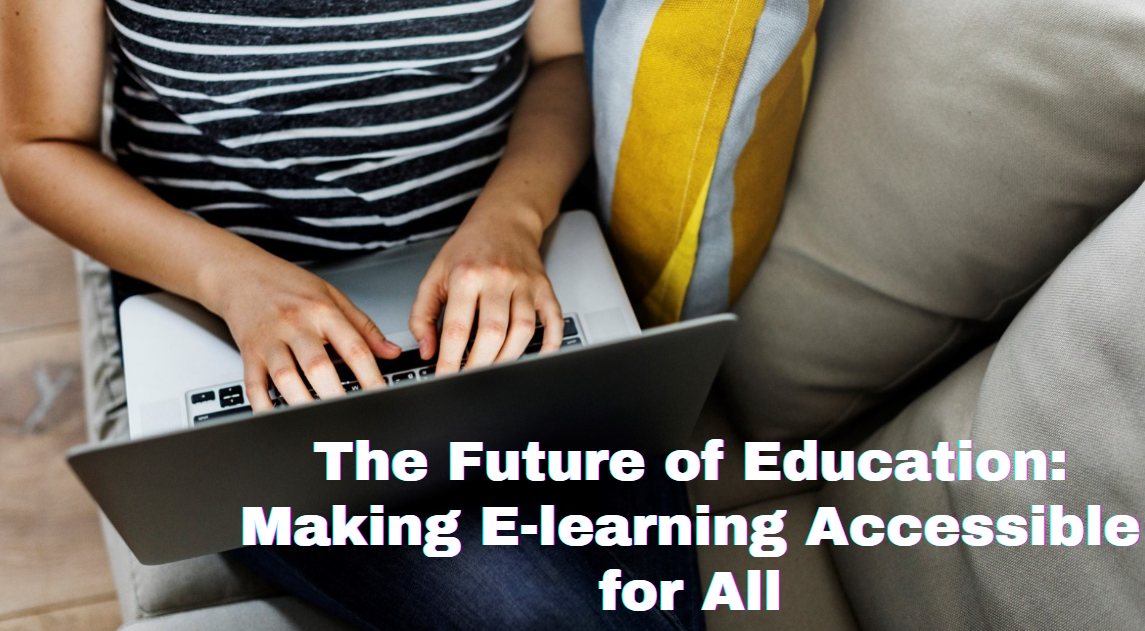The digital age has ushered an era of e-learning platforms with unprecedented growth, redefining the way learning is approached today. Web accessibility has rapidly emerged as one of the key issues in the firmly integrating of these platforms into contemporary learning. Making e-learning accessible to all, including the differently-abled, is not a need for society but a mandate for the future of education. That is why companies like accessiBe, are leading where it involves making sure that the web is accessible to each and everyone.
Challenges to the Accessibility of E-Learning Platforms: A Review of Their Solutions
As I stand, 15% of students currently live with a disability. In e-learning, accessibility acts as much more than just a feature. Nonetheless, the journey to an accessible e-learning environment is not free of hurdles; primarily among them are:
- Limited Access to Technology;
- Cognitive Overload;
- Lack of Universal Design;
- Inadequate Support for Assistive Technologies;
- Content Inaccessibility.
Though extensive, such challenges are not insurmountable.
Some solutions that can make a difference include:
- Universal Design;
- Compatibility with Assistive Technologies;
- Alternative Formats;
- User Training and Support;
- Regular Audits and Updates;
- Community Involvement.
It is through addressing these challenges and implementing the solutions that e-learning platforms will smoothly become inclusive, offering quality education to all people, regardless of an individual’s physical or cognitive abilities.
Innovative Technological Tools: Paving the Way for Inclusive E-Learning
In terms of inclusive learning, e-learning has undoubtedly been among the compelling reasons in the contemporary world. More importantly, it has opened access to educational content for all. The next are key technologies making a wide impact:
- Screen Readers: These have been around for a while but are continually evolving. Software such as JAWS and NVDA enable the visually impaired to “read” the content using audio feedback.
- Voice Recognition Software: Tools like Dragon Naturally Speaking enable users to control their computers and input text using voice commands thus facilitating people with motor disabilities to navigate an e-learning platform.
- Text-to-Speech and Speech-to-Text: These have become generalized inclusions within e-learning platforms to facilitate such conversions live and thereby make the content more accessible to users with hearing or visual impairments.
- AI-driven features: State-of-the-art technological developments, including machine learning algorithms and AI-driven solutions, are able to predict user requirements and dynamically alter content accordingly.
- Customizable User Interfaces: State-of-the-art e-learning platforms can, in most cases, change their fonts, colors, and layouts according to one’s requirements, making it an actual learning experience that is personalized.
- Real-Time Captioning: Sometimes, this feature comes in very handy during video lectures with real-time subtitles for the hearing-impaired.
- Keyboard Shortcuts and Navigation: For some, who find it extremely poking and stiff to use the mouse, keyboard shortcuts are essential features for moving up and down on the platform.
The Imperative of Action: How E-Learning Can Augment Accessibility
Digital transformation in education is therefore essential for educational institutions and organizations to ensure that e-learning does not become, like earlier initiatives, an online depot for knowledge but a sanctum of inclusiveness. Here, the legal landscape, demarcated by the ADA and Section 508, forms a basic framework, but the ethical duty extends much beyond compliance.
When one considers web accessibility, the objective is not solely to accommodate people with disabilities but to enrich the educational experience for everyone. Let’s work less in the direction of mere accessibility and more towards an e-learning ecosystem as diverse, dynamic, and dignified as the learners whom it serves.
